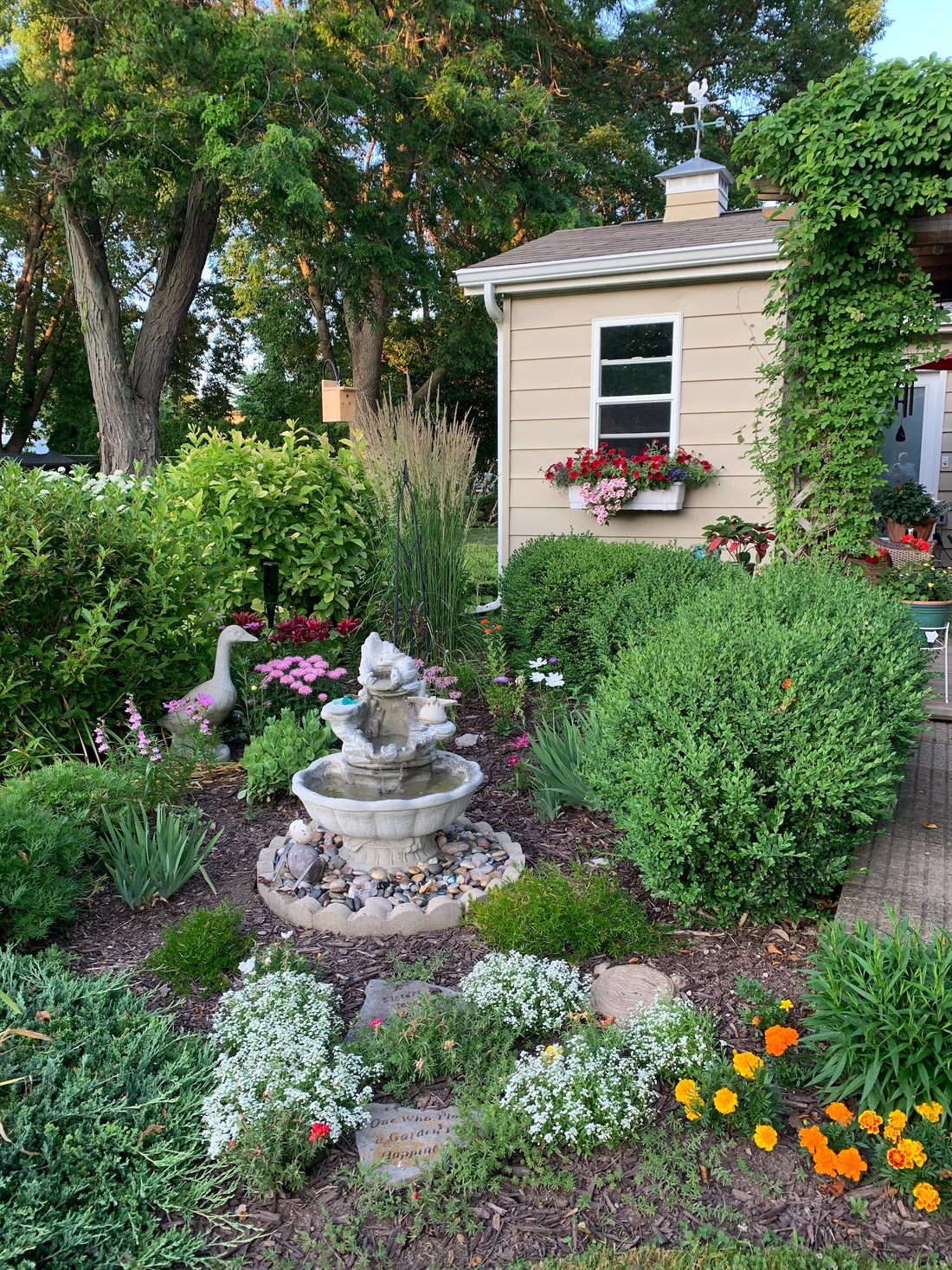Building A Rain Garden, Step By Step
Step One – Make A Plan
This step requires assessing the land to determine the best place for the garden, as well as size, soil, and slope considerations.
- Put the rain garden at least 10 feet away from the house so water doesn't seep into the house's foundation.
- Make sure you know where your septic system is, and don't dig there!
- Don't build a rain garden where the water already pools or runs. This is a bit counterintuitive, but the goal here is to improve infiltration across the entire yard.
- Place the rain garden in full or partial sun.
- Determine the soil type and whether it is suitable for a rain garden. The soil must be able to absorb water, which isn't possible with all soil types.
- Dig a 6" hole in the ground where you want the rain garden. Fill it with water. If it takes longer than 24 hours to soak in fully, the spot is unsuitable for a rain garden.
- Choose the flatter section of your yard so digging will be easier. It should not be more than a 12% slope because, at that point, it will take a tremendous amount of effort to build.
Step Two – Size
- Pick a rain garden shape – maybe one that integrates well with the yard or your overall aesthetic. Popular garden shapes are kidney, teardrop, and crescent.
- Determine a good size – a rain garden can be any size, so think about what you want and the overall purpose of the garden. Most home rain gardens average between 100-300 square feet.
- Once you've figured out the general shape and size, it's time to figure out the depth. A rain garden shouldn't be more than 8 inches deep since, at that depth, water tends to form a pond in the yard. On the other side, anything less than 4 inches deep will require a large amount of surface area to work properly.
- Measure the slope of the lawn to determine the depth. Do not skip this step, as it determines how much actual digging you'll be doing.
- Less than 4% slope – make 3-5 inches deep
- Between 5-7% slope – make 6-7 inches deep
- Between 8-12% slope – make 8 inches deep
The drainage area is simply the place where the water is coming from. Is it coming from a downspout on the house or another building? Determining the drainage area takes a little guestimation, but it is necessary to ensure you create a rain garden large enough.
Downspout is less than 30 feet from the proposed rain garden
All the water will come off the roof, but most houses have more than one downspout, so the water flow will be split. Measure your home's footprint by multiplying the length and width of the house to get the square footage. This is also the approximate footage of the roof. Divide that number by the number of downspouts you have on the roof to get the square footage for that one downspout.
Downspout is more than 30 feet from the proposed rain garden
Use the steps above to determine the roof drainage area. Measure the lawn area (length and width) that will drain into the rain garden and multiply them to determine the square footage. Add the roof drainage area to the lawn area square footage to get the total drainage area.
Step 4 – Surface Area
Use the drainage area calculations from the previous step to determine how big a surface area is needed to handle the rainwater that will flow to and through it.
For rain gardens less than 30 feet from the downspout
Multiply the total drainage area by .30 for 3.-5-inch deep gardens, by .25 for 6-7 inch gardens, and by .16 for 8-inch deep gardens.
For rain gardens more than 30 feet from the downspout
Multiply the total drainage area by .06
This number is the surface area square feet needed for your rain garden to operate well.
Step 5 – Length and Width
Look at the land and determine the best width. Where will the rain garden be most effective and catch the most water runoff? The maximum width should be around 15 feet, and 10 feet is a good way to make the best use of slope and digging depth.
Divide the surface area square feet by the width to determine the length.
Step 6 – Dig!
Call the neighbors, friends, and family and make a day of it. Make sure there are lots of refreshments to keep everyone hydrated and ready to dig.
Berm and Swale digging instructions for a rain garden



